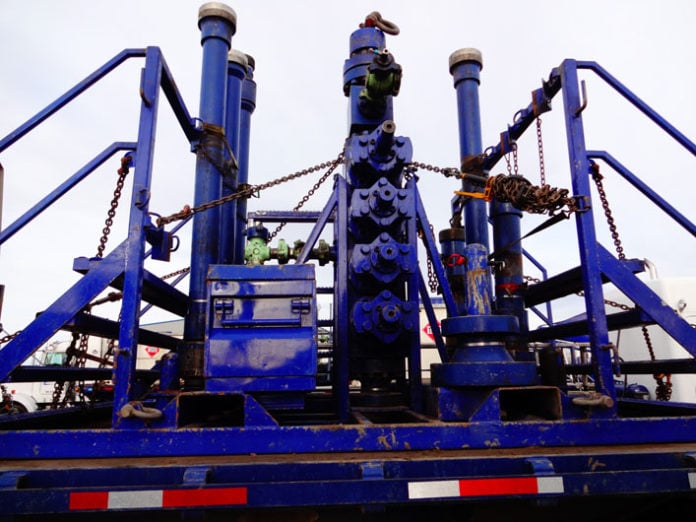Well perforating simply means creating holes in the casing and cement to allow communication between the wellbore and the formation.
After the well is drilled and the casing is installed, formation fluids including hydrocarbons are not able to travel into the wellbore and that’s why perforating is always performed before fracturing or production operations.
Related: What is Casing?
Most Common Perforating Methods
The three most common methods used for creating perforations in the well are jet perforating, abrasive jetting, and using a bullet perforator.
Jet Perforating
Jet perforating is done using shaped explosives that create pressure waves when detonated.
These pressure waves compress anything in their way including casing and cement and create channels that allow communication between the wellbore and formation.
The perforating guns that hold those explosives are usually run in the well on wireline, tubing, or coiled tubing.
One of the main advantages of using tubing to convey perforating guns into the well is the ability to get deep in highly deviated wells.
This method of using tubing to convey perforating guns into the well is called TCP, which stands for tubing-conveyed perforating.
The reason why wireline is not ideal on some of the wells is that it’s a flexible metal cable while coiled tubing is much more rigid and allows better force transfer to the tool.
Wireline on the other hand requires a pump down with a fluid to get to the target depth on horizontal wells.
Related: What is Coiled Tubing?
Abrasive Jetting Perforating
Perforating using abrasive jetting is performed by pumping a mixture of liquid, sand, and chemicals through the nozzle that creates a hole in the casing.
Abrasive jetting is usually performed using coiled tubing.
The disadvantage of abrasive jetting is that it is usually much slower and requires more equipment than jet perforating with explosives.
The advantage is that you can create bigger size perforations with minimal formation damage.
Bullet Perforator
Another perforating method that is not very popular anymore is using a bullet gun which creates holes in the casing by shooting specially designed bullets.
One challenge with bullet perforators is that the bullets are left in the formation and create low permeability zones that can have a negative impact on production.
Bullet perforators are also known to create undesirable fractures in the cement.
The other perforating methods that are not as common are using lasers, water jetting, pumping acid, and using mechanical cutters.
Read next: What is Wireline in Oil and Gas?
References:
petrowiki.spe.org/Perforating_methods
